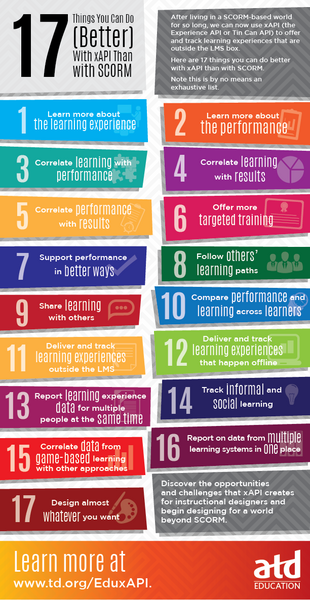ATD Blog
17 Things You Can Do Better With xAPI Than With SCORM
Tue Aug 16 2016


As adoption of xAPI (the Experience API, or Tin Can API) begins to spread, the convergence of working and learning offers instructional designers the opportunity—and the challenge—to do more than ever before.
For instance, xAPI allows for more robust and interesting tracking of the learning process, including learning that happens outside the LMS and on the job. What’s more, as actual performance and results data are combined with learning metrics, we will have the data we need to tailor the learning process to individual needs while simultaneously drawing more useful conclusions about the learning as a whole across a wider population.
Here are 17 things you can do better with xAPI than with SCORM.
Want to learn more? Join me for ATD’s Essentials of Creating Learning Experiences With xAPI. We’ll discuss three key areas of xAPI that affect instructional design: 1) identifying, finding, and analyzing data; 2) examining how and when to work with your LMS, learning record store (LRS), or both; and 3) leveraging xAPI across a variety of learning vectors—formal and informal, social and private, formative and summative, and predictable and variable.
